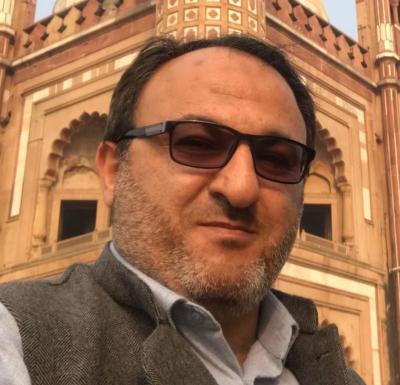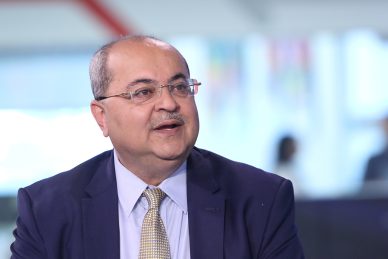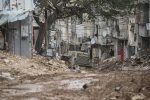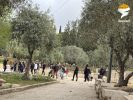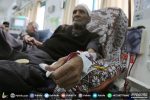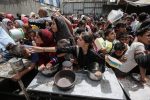Prologue
For decades Israeli leaders and media have insisted that Palestinians left their homes in the Nakba of 1948 leaving everything behind to become refugees of their own free will. Millions spent seven decades scattered in neighboring countries and elsewhere were denied the right to return to their homes in the land of their forefathers which had been taken over by foreigners – mainly European Jews – and deprived of basic human needs by hosting countries.
Zionist paramilitary groups such as the Irgun the Lehi the Haganah and the Palmach used to shoot dead all those Palestinians who dared to sneak back to their villages and towns under the pretext of combating infiltrators. Even those who entered simply to collect some of their belongings to use in the refugee camps or meet their relatives were also killed. Israeli historian Benny Morris in his book “Israel’s Border Wars 1949-1956: Arab Infiltration Israeli Retaliation and the Countdown to the Suez War” tells us that 90 per cent or more of those so-called infiltrations were for economic and social reasons. The great majority of those “infiltrators” who were killed in the period 1949-1956 – estimated to number between 2700 and 5000 – were unarmed.
Palestinian attempts to pressurise the international community to compel Israel to allow Palestinians to return to their homes have failed. All United Nations resolutions to this effect remain on paper due to US support for Israel while decades pass by. In 2012 Palestinian refugees in neighboring countries – along with activists from all over the world – started the Global March to Jerusalem which was met with bullets and in which many people lost their lives. Due to the Arab Spring this march lost momentum but the problem remained.
In March 2018 another attempt was born – the Great March of Return. This was supposed to commence in all neighboring countries including the occupied West Bank and besieged Gaza Strip. Only in the Gaza Strip did the March retain its vigour. People from all walks of life and from all political backgrounds and affiliations decided not to die of hunger or shortage of medicine nor did they want to “explode” in the face of Hamas as Palestinian Authority (PA) President Mahmoud Abbas and Israel planned. Instead they decided to die in dignity or simply go back to their lawful homes in the lands occupied by Israel.
Scene 1: “We (women) have more strength than any man”
While attending to injured participants in the Great March of Return Razan Al-Najjar a 21-year-old unarmed volunteer paramedic was shot by an Israeli sniper on 1 June 2018. Razan’s white coat was stained with blood this time unlike any time before. She was frequently photographed with the blood of Palestinian demonstrators on her white coat but this time it was her own blood. She had a strong character and felt strongly about the tragedy of her people. She was injured twice before in the demonstrations. Her father lost his shop in an Israeli airstrike during the 2014 war which left more than 2000 Palestinians dead and many structures destroyed. Why did the Israeli sniper decide to kill Razan?
Scene 2: “My name is Yaser and I have never traveled in my life”
While Yaser Murtaja was covering the second day of the Great March of Return the 30-year-old photographer and cameraman was shot dead despite wearing a blue journalist-style flak jacket marked with the word “press”. He was as one report described him “a man with an infectious smile [who] dedicated his life to telling [the] stories of Gaza residents.” Yaser always hoped to leave Gaza – which has been under Israeli embargo for the last 13 years – a wish which he could not fulfill. He loved children cats and his work. Yaser was a husband and father to one child. Yaser loved life his camera and most importantly his homeland.
Scene 3: Returning to Hirbiya
A 44-year-old Palestinian woman Amal Mostafa Al-Taramsi was shot in the head by live fire by Israeli occupation forces during Great March of Return protests becoming the first Palestinian fatality in 2019. According to local sources she was 250 meters away from the boundary fence when an Israeli sniper ended her life. She has always dreamt of returning to her village in the land of her ancestors Hirbiya.
Scene 4: Struck in the face
Twenty-three-year-old Haitham Abu Sabla was struck in the face by a gas canister fired by Israeli occupation forces during the Great March of Return. The canister pierced his cheek got stuck there and the smoke poured from his mouth in a scene that befits a horror film. Haitham spent three days on life support. Dr Hussam Al-Majayda the doctor who operated on him said: “It’s the first time we have dealt with such a thing it took 45 minutes to remove the canister.” Fortunately although Haitham’s jaw and face suffered multiple fractures and his teeth and nose were damaged he survived.
Epilogue
Every Friday thousands of Palestinians gather near the Israeli fence – intended to separate the Gaza Strip from the rest of Palestine – and conduct civil protests. As pointed out by Human Rights Watch (HRW) the Israeli army has been targeting the protesters killing about 250 people injuring about 26000 and causing about 100 to lose their limbs. In none of these cases did protesters represent an immediate and imminent danger to the lives of Israeli soldiers. Among these 461 medical personnel were targeted by Israeli soldiers 42 were injured and three were killed.
-The Tragedy Goes on-
– Dr Mohammad Makram Balawi is a Palestinian writer and academic based in Istanbul. He is the president of Asia Middle East Forum. His article appeared in MEMO.

